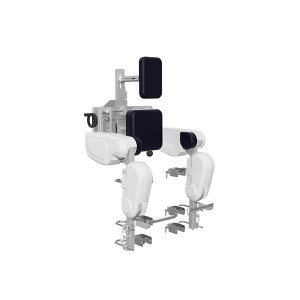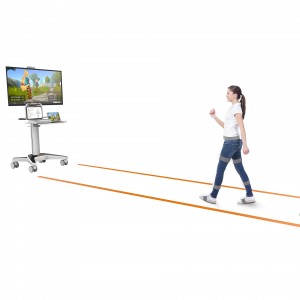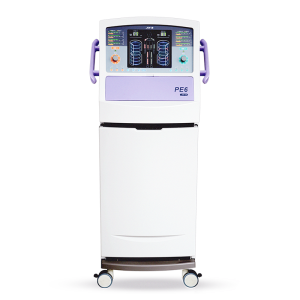What Is A Gait Training Robotics?
The gait training and assessment robotics is a device for rehabilitation training for walking dysfunction. It adopts computer control system and gait correction device to enable gait training. Making patients strengthen their normal gait memory with repeat and fixed trajectory gait training under the straight stereo position. With gait robot, patients can re-establish their walking function areas in their brains, establish the correct walking mode. What’s more, the robot effectively exercises walking related muscles and joints, which is great for rehabilitation.
The gait training robotics is suitable for rehabilitation of walking disability caused by nervous system damage such as stroke (cerebral infarction, cerebral hemorrhage). The earlier the patient starts gait training, the shorter the rehabilitation duration will be.
What's the Therapeutic Effect of the Gait Training Robotics?
1, resume the normal walking gait mode during early walking training;
2, effectively inhibit and alleviate spasms and improve joint mobility;
3, dynamic weight support, enhance the proprioceptive input, maintain and improve muscle strength.
What Features Does the Gait Training Robot Have?
1, Design according to the normal gait cycle;
2, Imported servo motors - precisely control the joint movement angle and walking speed;
3, Active and passive training modes;
4, The guiding force is soft and adjustable;
5, Perform gait correction abnormal gait habits by gait offset;
6, spasm detection and protection;
7, suspension system has two support modes: Static support: suitable for vertical lifting and landing, making it easy to transfer patients from wheelchair to the standing state. Dynamic support: dynamic adjustment of the body's center of gravity in the gait cycle.
8, patent treadmill - The speed of the treadmill and the gait corrector are automatically synchronized; The lowest speed is 0.1km/h, suitable for early rehabilitation training; The treadmill can work as a cushion that protects patients’ knees and ligaments.
9, virtual scene feedback training - enhance the enthusiasm of training, reduce the boring treatment, and promote the recovery process of patients.
10, software - establish patients' database to record treatment information and treatment plans; The treatment plan is adjustable to achieve precise control and accurate recovery; Display the patient's leg resistance curve in real time; Real-time monitoring of leg active and passive training, monitoring the patient's active force situation.
During the past decades, we have been developing a lot of rehab equipment including physical therapy and rehab robots. Find what's the most helpful to you, and feel free to send a contact message.


















